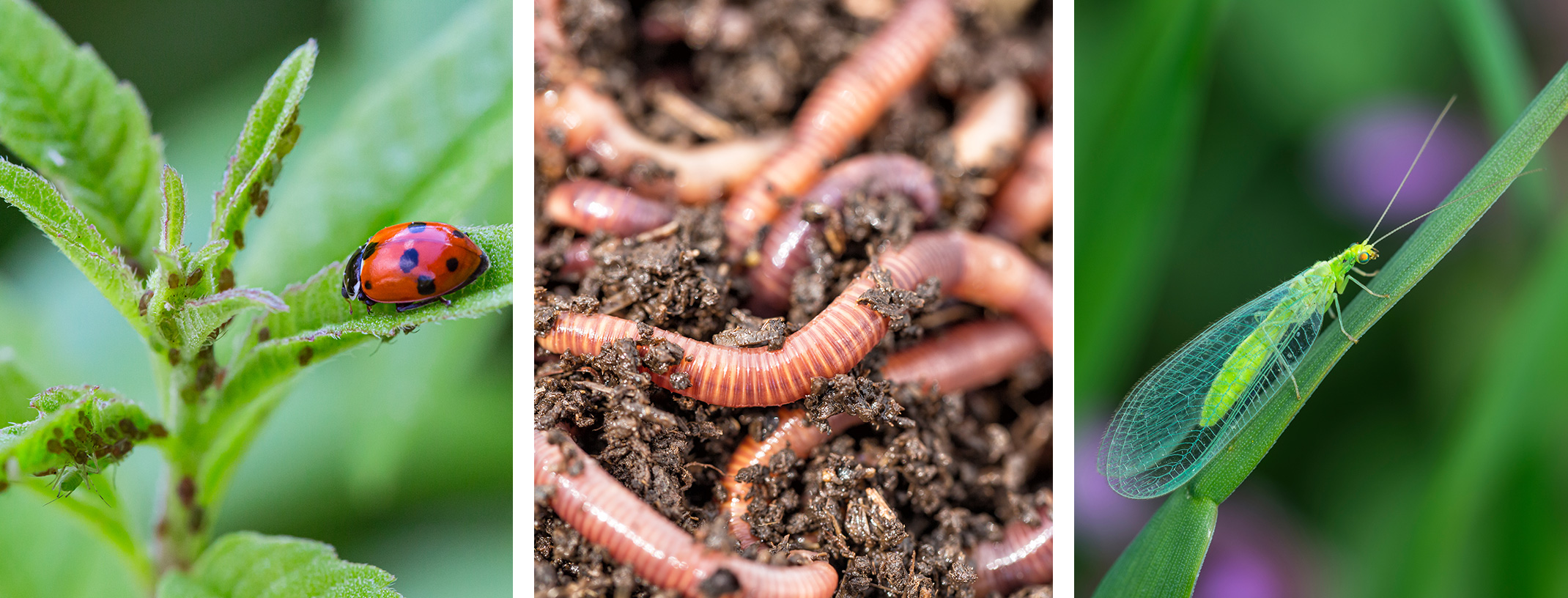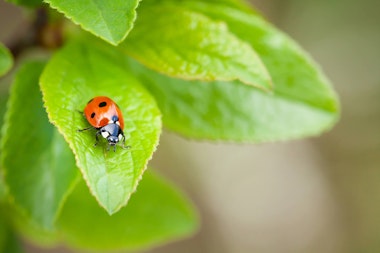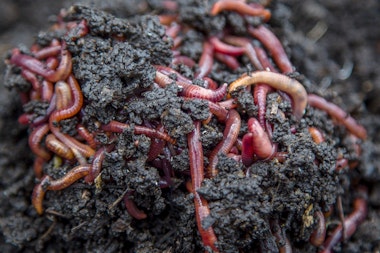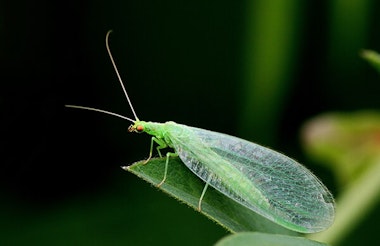 Be Inspired Blog - Arizona
Be Inspired Blog - Arizona

Natural Pest Control: How Ladybugs, Worms & Lacewings Help Your Desert Garden
Gardening in the Valley of the Sun presents unique challenges, from scorching summers to nutrient-poor desert soils. However, one of the most significant struggles for local gardeners is managing pests without resorting to chemical pesticides, which can disrupt the delicate balance of your garden’s ecosystem. Fortunately, nature provides its own solutions through beneficial insects such as ladybugs, worms, and lacewings. These tiny allies can help protect your plants while fostering a more sustainable, organic approach to gardening.
Ladybugs: The Voracious Aphid Hunters
Ladybugs (also known as lady beetles) are one of the most effective natural pest controllers in any garden, and they are particularly useful in our warm climate. These spotted beetles feed on soft-bodied pests such as aphids, whiteflies, and scale insects, which thrive on citrus trees, roses, and vegetable crops.
 How to Attract Ladybugs to Your Garden:
How to Attract Ladybugs to Your Garden:
- Plant nectar-rich flowers such as marigolds, cosmos, and sweet alyssum.
- Avoid chemical pesticides that can kill ladybugs or their larvae.
- Release purchased ladybugs in the evening or early morning near infested plants.
- Provide them with a water source, such as a shallow dish with pebbles.
Worms: The Underground Soil Enhancers
While worms may not seem like pest controllers at first glance, their contribution to a healthy desert garden is undeniable. Earthworms and composting worms break down organic material, enriching the soil with nutrients and improving its structure. This helps plants develop strong roots, making them more resilient against pests and diseases.
 How to Encourage Worm Activity:
How to Encourage Worm Activity:
- Add organic matter like compost or well-rotted manure to your soil.
- Keep the soil moist, especially in shaded areas or raised beds.
- Use mulch to retain moisture and create a cooler environment for worms.
- Consider vermicomposting (worm composting) for nutrient-rich worm castings.
Lacewings: The Silent Predators of Garden Pests
Green lacewings are delicate insects, but their larvae are ruthless predators of aphids, mealybugs, thrips, and caterpillars. In the Valley’s arid climate, lacewings are an excellent addition to your pest control arsenal, as they help control outbreaks of destructive insects on native and non-native plants alike.
 How to Attract and Maintain Lacewings:
How to Attract and Maintain Lacewings:
- Plant native flowering plants like desert marigold, globe mallow, and yarrow to provide nectar for adults.
- Avoid using broad-spectrum insecticides that kill lacewing larvae.
- Purchase and release lacewing eggs or larvae near infested plants.
- Provide shelter with diverse plantings and minimal garden disturbance.
Creating a Balanced Ecosystem in the Desert Garden
 By fostering a garden environment that attracts beneficial insects, you can achieve natural pest control while promoting biodiversity. Here are additional tips for maintaining a thriving organic garden in the Greater Metro Phoenix area:
By fostering a garden environment that attracts beneficial insects, you can achieve natural pest control while promoting biodiversity. Here are additional tips for maintaining a thriving organic garden in the Greater Metro Phoenix area:
- Incorporate companion planting to naturally deter pests.
- Use shade cloths and row covers to protect plants from excessive heat and insects.
- Water efficiently using drip irrigation to maintain healthy plants resistant to infestations.
- Plant a variety of native and drought-tolerant species to support beneficial insects year-round.
Embracing natural pest control through ladybugs, worms, and lacewings allows you to maintain a flourishing desert garden without relying on harmful chemicals. By creating a welcoming habitat for these beneficial insects, you not only protect your plants but also contribute to a healthier, more sustainable environment. Whether you’re growing vegetables, citrus, or desert-friendly ornamentals, these natural allies are your best defense against pests in the Valley of the Sun.

